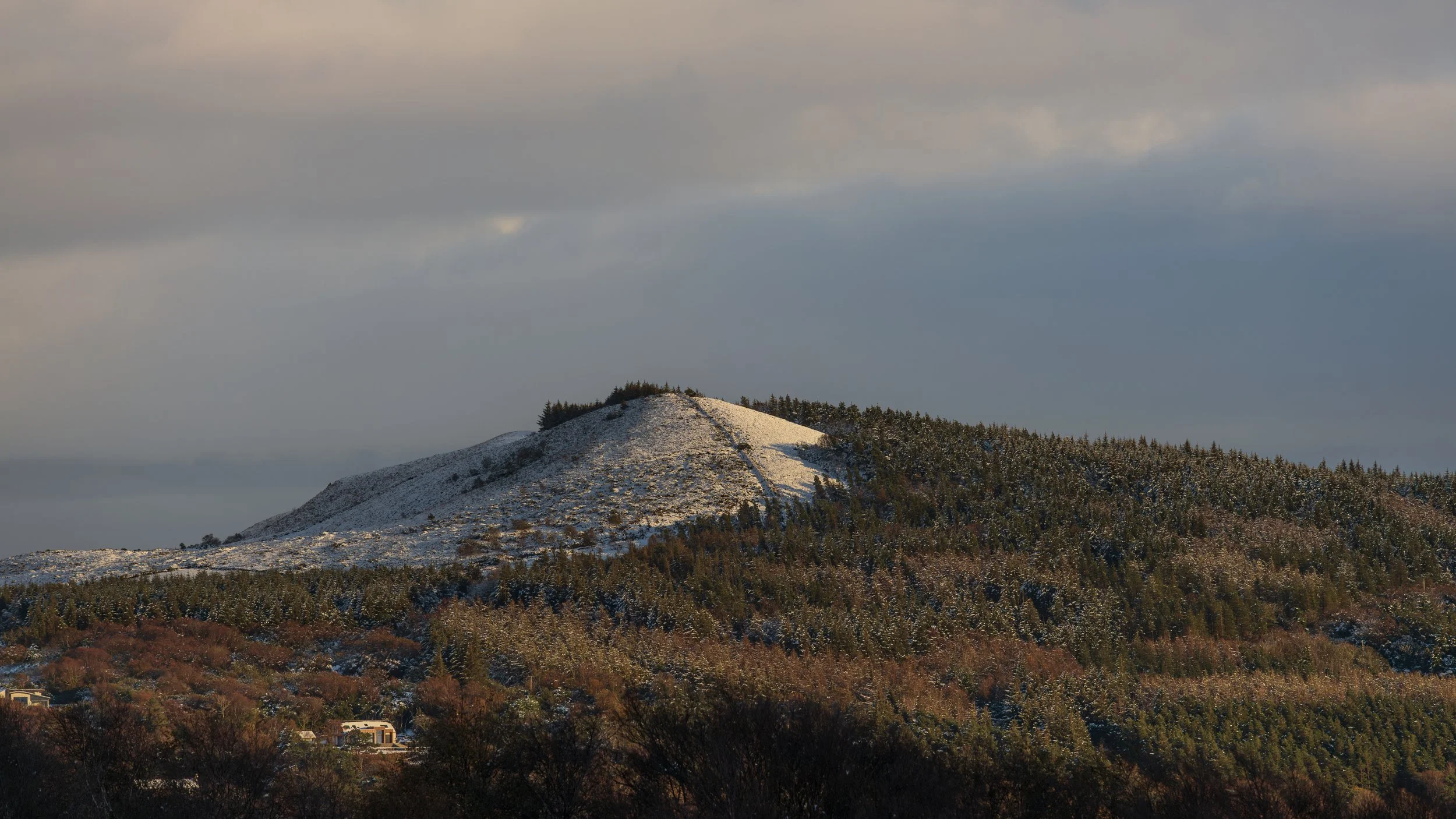Capturing Fleeting Magic: Snow-Covered Macgillycuddy's Reeks
Snow in Ireland is rare, and when it arrives, it doesn't stay long. When I saw the forecast hinting at snowfall over the Macgillycuddy’s Reeks, I knew there was a short window to capture it. On a November morning, I set off for Killarney, hoping to find the mountains draped in white. Conditions looked promising—fresh snow, clear skies, and the rugged beauty of County Kerry at its best.
Crossing the Cork and Kerry border, the landscape shifted dramatically. Snow lay thick on the ground, untouched and silent. The mountains ahead stood sharp against the sky, their peaks covered in a crisp layer of white. Clouds moved fast, teasing the potential for changing light. I knew I had to work quickly—snow in Ireland rarely lingers.
By the time I reached Killarney, the Reeks were fully visible, their snow-covered ridges standing out against the darker tones of the lower slopes. The overcast sky carried a subtle glow, hinting at the possibility of a break in the clouds.
I met up with my friend Jaro, a fellow photographer, and we set out to explore. The contrast between the snow and the last of the autumn foliage gave the landscape an unusual depth—warm golden tones against the cold blues and whites of the peaks. We moved between vantage points, looking for compositions that captured both the scale and detail of the mountains.
The snow was just right—thick enough to transform the landscape, but not so heavy that it obscured the mountain’s structure. Across the horizon, a light dusting of snow over the Dingle Peninsula added a sense of distance and atmosphere.
I launched my drone to take in the full scope of the scene. From above, the Reeks looked otherworldly, their peaks rising through the mist, the light shifting across the landscape. Aerial shots revealed patterns and textures that were impossible to see from the ground—lines of ridges cutting through the snow, valleys draped in shadows.
Switching to my telephoto lens, I focused on isolating individual peaks and ridgelines. The compression effect brought distant elements closer, making the layers of mountains feel stacked and dramatic. This approach worked well in capturing the interplay of light and texture across the snow-covered slopes.
As the day wore on, we moved towards Lough Leane, hoping for a sunset. The light softened, casting a glow over the landscape, but it was uncertain whether the sky would fully open up. With a 50/50 chance of color, we set up and waited.
I worked with different compositions—telephoto shots to isolate sections of the mountains and wide-angle views to bring in the lake and trees as framing elements. A panoramic approach worked best, allowing both the foreground and distant peaks to be included in a single frame. The diffused light bouncing off the snow added a soft, almost glowing effect to the mountains. Within minutes the entire scene was a vibrant orange and it was a magical end to a great day
Takeaways for Snow Photography
Act fast – Snow in Ireland doesn’t last long. Be prepared to head out as soon as conditions align.
Metering adjustments – Snow can trick a camera into underexposing. Dial up the exposure slightly to maintain the brightness.
Lens choice matters – A telephoto lens isolates details like ridgelines, while a wide-angle captures the full scale of the scene.
Drones add perspective – Aerial shots reveal patterns and compositions that aren’t visible from the ground. Always check weather conditions before flying.
Snow-covered landscapes here are unpredictable, but when everything aligns—fresh snow, good light, and clear visibility—it makes for some of the most rewarding photography Ireland has to offer.
You can watch the video I created from this adventure below



















































